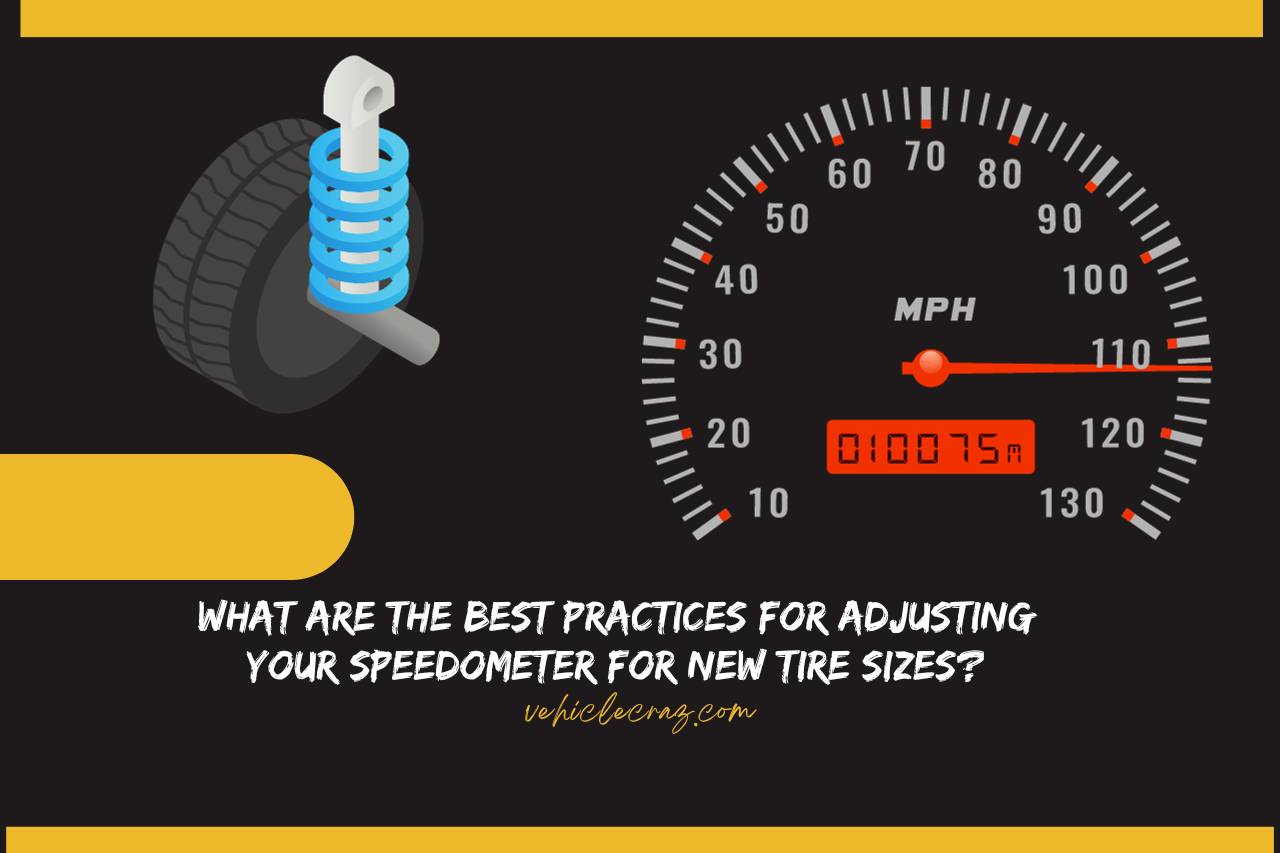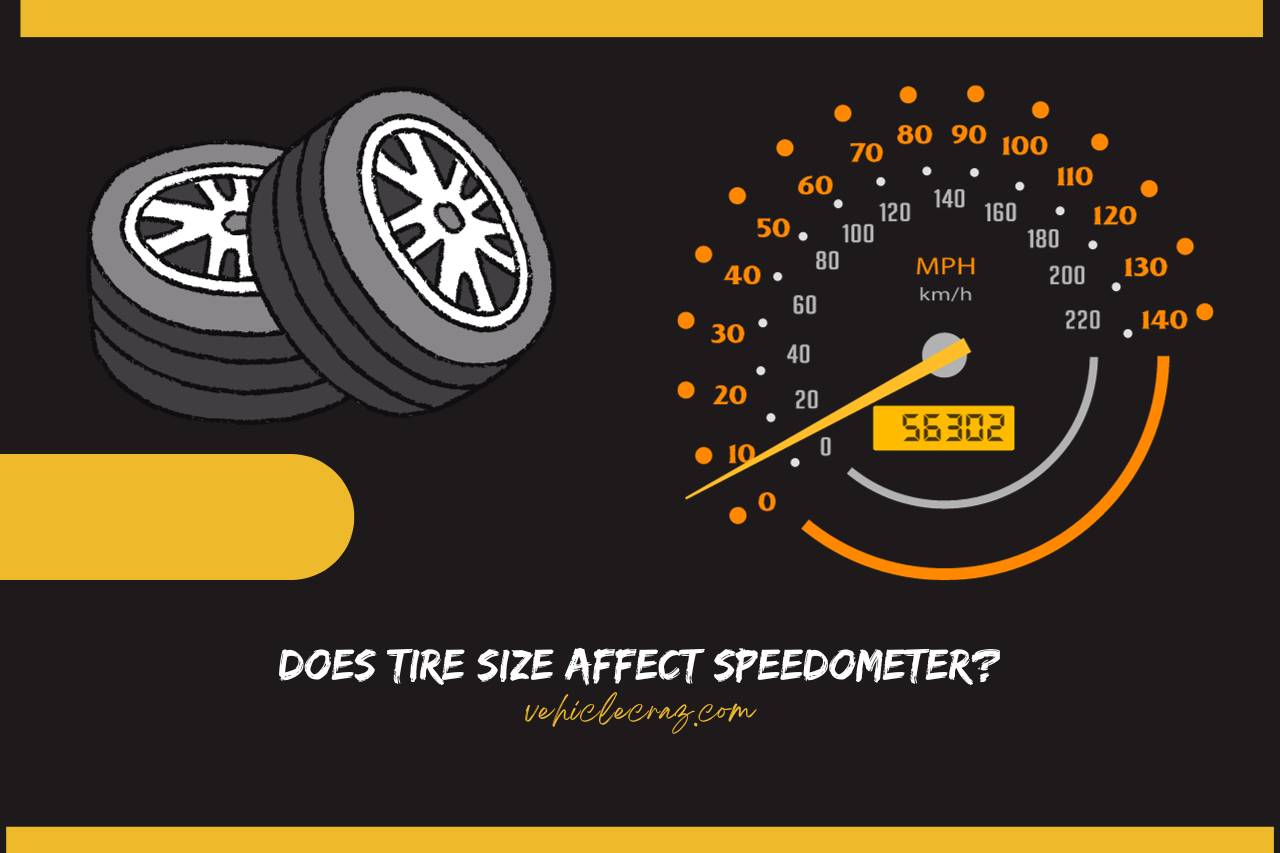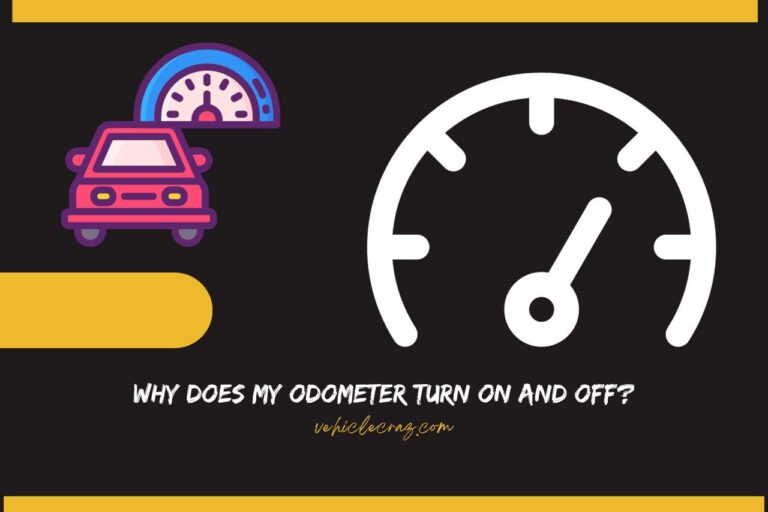Does Tire Size Affect Speedometer? [Myths Busted]
“Does tire size affect speedometer accuracy?” is a crucial question for vehicle owners, including you, who are considering tire modifications. Understanding the relationship between your tire size and the speedometer readings is essential not only for maintaining accurate speed measurements but also for ensuring your road safety and legal compliance. Let’s get started.
How Does Tire Size Affect Speedometer Accuracy?
The impact of tire size on your speedometer accuracy is significant, as changing the tire sizes can lead to incorrect speed readings.
When your vehicle’s tire size deviates from the original equipment manufacturer’s (OEM) specifications, your speedometer calibration is affected.
This is because the speedometer measures vehicle speed based on the tire rotations.
Larger tires will cover more ground per revolution, causing the speedometer to read slower than your vehicle’s actual speed.
Conversely, smaller tires will result in faster reading than the true speed.
This discrepancy can lead you to speed-related issues, including safety concerns and the legal implications due to unintentional speeding.
To maintain the speedometer accuracy, it’s crucial to adhere to the OEM tire size or recalibrate the speedometer when changing the tire sizes.
Regular checks and adjustments ensure that your vehicle’s speed readings remain precise and reliable. This recalibration can typically be done at a certified automotive service center.
What Happens to Your Vehicle When You Change Tire Sizes?
When you change the tire sizes, your vehicle experiences several key changes that affect performance and safety.
Altering the tire size from the manufacturer’s recommended specifications impacts more than just the speedometer accuracy; it influences various aspects of your vehicle’s functionality.
Firstly, the overall handling and stability of the vehicle can be affected. Larger tires often lead to improved traction and stability on rough surfaces but may decrease maneuverability and increase braking distances.
Smaller tires, conversely, might enhance agility but reduce stability, especially at higher speeds or on uneven terrain.
Secondly, the fuel efficiency of the vehicle can change. This happens because different tire sizes can alter the rolling resistance, which directly affects fuel consumption.
Larger tires typically increase the rolling resistance, potentially decreasing the fuel efficiency, while smaller tires may have the opposite effect.
Additionally, changing the tire sizes can strain your vehicle’s suspension and transmission systems.
This strain occurs because your vehicle’s design and engineering are optimized for specific tire sizes, and deviations from this can lead to uneven wear on the components and potentially costly repairs.
Overall, altering the tire sizes necessitates careful consideration of certain factors to ensure that your vehicle remains safe, efficient, and reliable.
Understanding the impacts helps you make informed decisions about the tire size modifications while maintaining your vehicle’s optimal performance.
How to Calculate the Effect of Different Tire Sizes on Your Speedometer?
To calculate the effect of different tire sizes on the speedometer, a specific formula can be applied.
This formula helps you determine how much the speedometer will be off with the new tire size.
The calculation involves comparing the circumference of your original tires with that of your new ones.
The formula is as follows:
New Speed Reading = Old Speed Reading × (New Tire Circumference/Old Tire Circumference)
First, you need to find the circumference of both your old and new tires. Circumference can be calculated using the formula:
Circumference = Diameter × π
The diameter is the total height of the tire, which can be calculated from the tire size specifications (usually found on your tire’s sidewall).
Once you have both circumferences, plug them into the first formula with the current speed reading to find out what the speedometer would read with the new tires. For example, if your original tires had a circumference of 2000 mm, the new tires have a circumference of 2100 mm, and the speedometer reads 60 mph, the new reading would be approximately 63 mph (60 x 2100/2000).
Using this method, you can accurately gauge how the tire size changes will affect the speedometer readings, ensuring safer and more informed driving practices.
This calculation is essential for maintaining legal speed limits and overall vehicle safety.
Is It Legal to Have Inaccurate Speedometer Readings Due to Tire Size Changes?
Whether it’s legal to have inaccurate speedometer readings due to the tire size changes varies by jurisdiction, but generally, it’s required by law to maintain an accurate speedometer.
Most regions have regulations stipulating that the vehicle’s speedometer must display the speed within a certain margin of accuracy.
These laws are in place to ensure road safety and compliance with speed limits.
When you change the tire size, if the alteration leads to a significant deviation in the speedometer reading, it could potentially bring the vehicle out of compliance with legal standards.
This discrepancy can result in unintended speeding, posing a risk to both the driver and other road users.
In many cases, driving with a significantly inaccurate speedometer can lead to legal repercussions, such as fines or points on your driving record.
To remain on the right side of your law, it’s advisable to recalibrate your speedometer after changing the tire sizes.
This recalibration is often a straightforward process that can be performed at automotive service centers.
Keeping the speedometer accurate not only helps in avoiding legal issues but also ensures a safer driving experience.
While the legality may vary, the responsibility lies with the vehicle owner to ensure their speedometer’s accuracy, especially after modifications like tire size changes.
It’s a crucial aspect of vehicle maintenance that aligns with both the legal and safety considerations.


What Are the Best Practices for Adjusting the Speedometer for New Tire Sizes?
To ensure an accurate speedometer reading after changing the tire sizes, following the best practices for adjustment is essential. These practices help you maintain both legal compliance and safety on your road.
- Consult the Vehicle’s Manual: Start by checking the vehicle’s manual for any recommendations or specific procedures related to tire size changes and speedometer recalibration.
- Professional Calibration: The most reliable way for you to adjust the speedometer is to have it professionally recalibrated. This is usually done at an automotive service center. The technicians use specialized equipment to accurately recalibrate the speedometer to correspond with the new tire size.
- Speedometer Calibration Devices: For some vehicles, especially modern ones, there are speedometer calibration devices available. These devices can be plugged into the vehicle’s computer system to adjust the speedometer settings.
- GPS-Based Calibration Tools: Another method is using GPS-based tools to measure actual speed and then adjust the speedometer accordingly. This method can be particularly useful for vehicles where manual recalibration is complex or not possible.
- Regular Checks and Adjustments: After recalibration, it’s important to periodically check the accuracy of the speedometer, especially if you frequently change the tire sizes. Using the GPS device to compare the speedometer reading with the actual speed can be a practical approach.
You May Also Like
- Does Speedometer Measure Average Speed? Exploring Speedometer!
- Can you Add a Digital Speedometer to a Car? (Step-by-Step)
- How to Remove Scratches from Speedometer Lens? Practical How-To!
- Which Fuse Controls the Speedometer? Start with the Fuse Box!
- How to Calibrate a Speedometer? From Novice to Pro!
- How to Tell If My Car Speedometer is Accurate? Tips to Test!
- Speedometer Not Working – Troubleshooting Your Car!
- Does ABS Sensor Affect Speedometer? Exploring the Connection!
- Why is My Speedometer Jumping? Solving the Mystery!


I’m Alex, a seasoned mechanical teacher with over 20 years of hands-on experience in Australia. My passion for all things automotive has driven me to establish this blog, aiming to share my wealth of knowledge and expertise with fellow enthusiasts, DIYers, and anyone keen on understanding the mechanics behind the machines we rely on daily.







